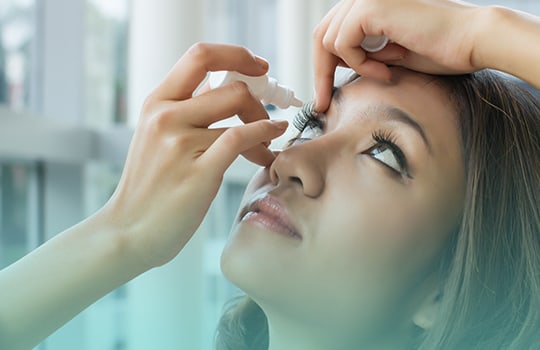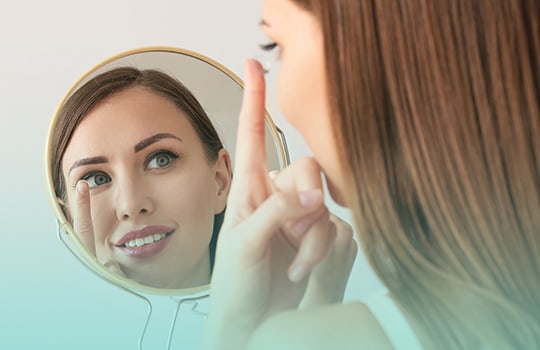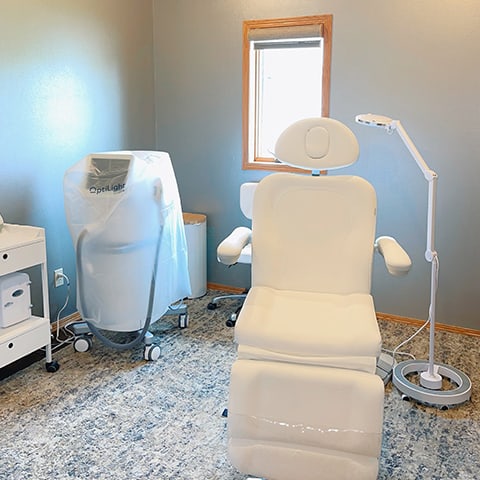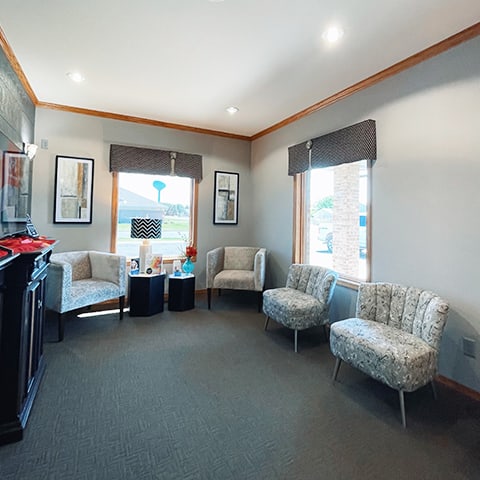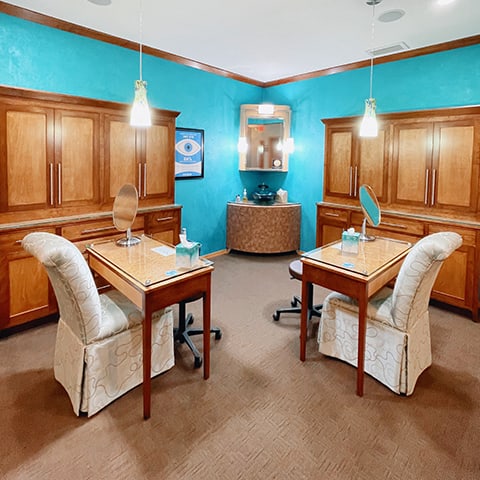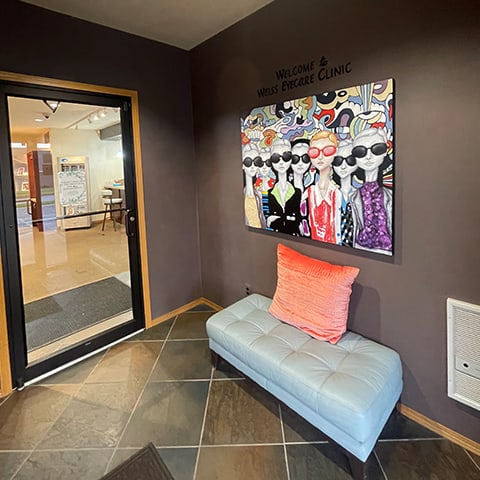Managing the Different Forms of Eye Disease
Eye disease can come in many different forms, including glaucoma, cataracts, age-related macular degeneration (AMD), and diabetic eye disease. Our team takes an approach that’s all about the details.
To get a closer look at your eyes and vision, we use diagnostic technologies, such as OCT, optomap retinal imaging, virtual reality visual field, and macular pigment optical density testing, to gather the necessary information.
Our eye disease diagnosis and management techniques can help us preserve your long-term vision. Contact us to schedule your appointment today and get started.
Book AppointmentAddressing Eye Disease Early
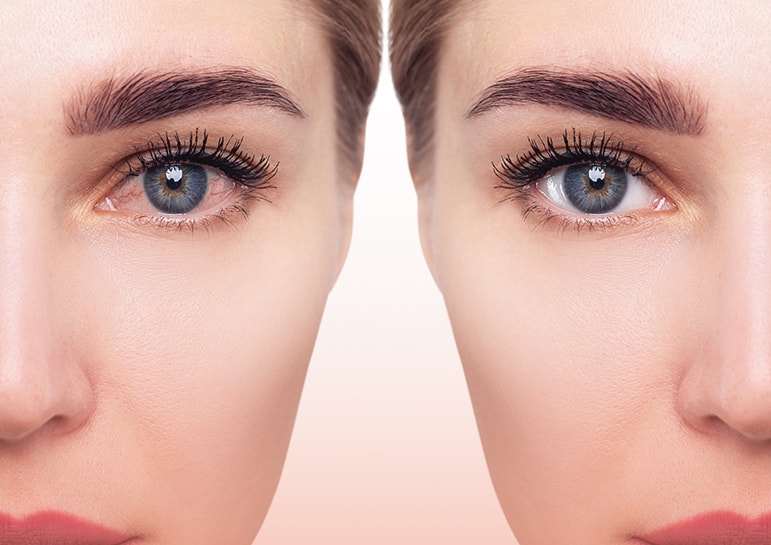
Regular eye exams are about more than just updating your prescription—they also help our team detect eye disease early. Detecting eye diseases in their early stages can improve the effectiveness of treatment and help prevent long-term vision problems.
We aim to help you achieve and maintain clear and healthy vision through timely eye exams and treatment plans tailored to your specific needs.

Educating Our Patients on Eye Disease
Eye disease is an umbrella term for a variety of different eye issues and conditions that can affect your vision and eye health. Our team is here to support you—we believe in the importance of educating our patients about their eye health and providing comprehensive management and treatment services.
We’ll take the time to explain your diagnosis, answer questions you may have, and develop a personalized treatment plan that meets your unique needs.
Glaucoma
Glaucoma is a group of eye disorders that cause damage to the optic nerve, which is responsible for sending visual information to your brain. Damage to your optic nerve can result in vision loss if left untreated.
The 2 most common forms of glaucoma can cause damage to the eyes due to high intraocular pressure, which is pressure within the eye. We recommend regular eye exams as an essential component of monitoring your vision and detecting glaucoma in its early stages.
We offer diagnostic tools, such as optomap retinal imaging and LKC ERG testing, to accurately diagnose and manage glaucoma.
Cataracts
When cataracts develop, the usually clear lens of the eye becomes cloudy. Cataracts begin forming when proteins in the eye form clumps that prevent the lens from sending clear images to the retina, the thin layer of tissue that lines the back of the eye.
Common symptoms of cataracts can include:
- Difficulty seeing and driving at night
- Seeing dim or yellowed colors
- Blurred vision
If cataracts progress to a later stage and prevent you from going about your daily activities, such as reading or driving, cataract surgery is the best and only option to remove them.
Diabetic Eye Disease
Diabetes can affect not only your blood sugar, but your vision as well. Diabetes can increase your risk of developing eye diseases such as glaucoma, cataracts, and diabetic retinopathy.
Diabetic retinopathy is a significant concern for those with diabetes and can lead to vision loss.
Signs and symptoms of diabetic retinopathy can include:
- A loss of central vision
- Blurry vision
- Difficulty seeing and driving at night
We offer virtual reality visual field testing and other diagnostic solutions, including LKC ERG testing to help you manage diabetic eye disease.
Age-Related Macular Degeneration
Age-related macular degeneration (AMD) affects the macula, which is responsible for sharp central vision and is a leading cause of vision loss in older adults. Symptoms can vary depending on the type of AMD you have but may include:
- Blind spots
- Blurry or distorted vision
- Difficulty seeing colors
Risk factors for AMD include age, family history, and smoking. Along with virtual visual field diagnostics and macular pigment optical density testing, our team can help you manage AMD with medications, lifestyle changes, and surgical options.
A Keen Attention to Detail
We strive to provide our patients with a detailed, informative experience every time they visit us. Our practice places a great emphasis on education, and we believe in informing our patients about the various types of eye diseases and the technology we use to monitor them before devising treatment plans.
We offer our patients a comprehensive range of services and therapies, such as efficient diagnostic technology, thorough eye exams, and customized treatment plans to cater to their individual needs.
Our Diagnostic Technology
Understanding and learning about the different forms of eye disease can help our patients during the diagnostic stage. Our diagnostic technology helps us to detect signs of eye disease early on, allowing us to develop tailored treatment plans that meet your unique needs.
Our diagnostic tools include optical coherence tomography, Optos retinal imaging, virtual reality visual fields, macular pigment optical density testing, corneal topography, and electroretinography testing.
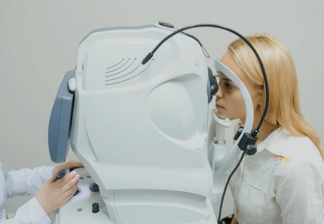
Optical coherence tomography
Optical coherence tomography (OCT) is a diagnostic tool that uses light waves to take high-resolution images of the retina, optic nerve, and other structures inside your eye. These detailed images help us diagnose and manage a variety of eye conditions, including glaucoma, macular degeneration, and diabetic retinopathy.
OCT is a noninvasive procedure that takes only a few minutes to complete.
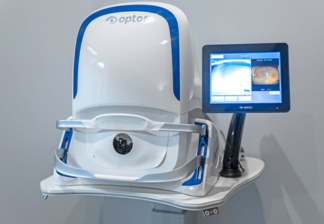
Optos retinal imaging
Optos retinal imaging provides a panoramic view of the retina in a single image. This technology allows us to capture up to 200 degrees of the retina and detect potential issues or diseases, such as glaucoma, macular degeneration, or diabetic retinopathy.
With optos retinal imaging, we can provide more accurate diagnoses and develop treatment plans for our patients.
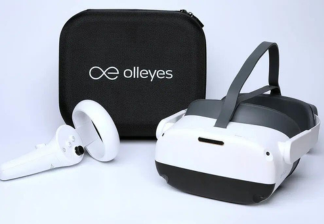
VR visual field testing
Virtual reality visual field testing uses virtual reality headsets to create an immersive experience that simulates real-life scenarios while measuring the patient’s visual field. It is an effective tool in detecting and managing eye diseases such as glaucoma, which can cause vision loss in the peripheral vision areas.
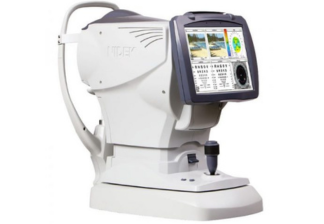
Corneal topography
Corneal topography is a noninvasive imaging technique that measures the curvature and shape of the cornea, which is the front part of the eye. Corneal topography is used to diagnose and manage a variety of eye conditions, such as keratoconus, corneal dystrophies, and perform contact lens fittings.

Macular pigment optical density
Macular pigment optical density (MPOD) testing is a noninvasive imaging technique used to evaluate the macular pigment in the eye. The macular pigment is responsible for protecting the retina from harmful blue light and oxidative stress, which can lead to macular degeneration.
MPOD testing helps us evaluate the level of macular pigment in your eye and determine if you are at risk for age-related macular degeneration.
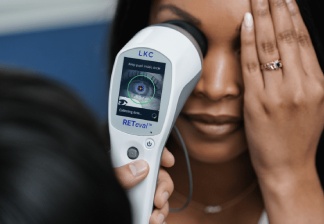
Electroretinography testing
LKC ERG (electroretinography) testing can play a crucial role in glaucoma management and diabetic eye care. With LKC ERG testing, doctors can assess the function of your retina and your visual pathways to detect glaucoma at an early stage and monitor its progression over time.
In addition, LKC ERG testing can evaluate retinal function to help identify abnormalities or changes caused by diabetes. This type of testing helps with determining the appropriate treatment plan for your needs and monitoring the effectiveness of treatments over time.
Optical coherence tomography
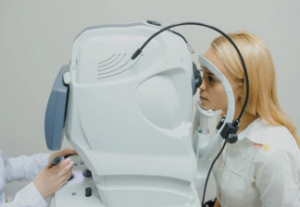
Optical coherence tomography (OCT) is a diagnostic tool that uses light waves to take high-resolution images of the retina, optic nerve, and other structures inside your eye. These detailed images help us diagnose and manage a variety of eye conditions, including glaucoma, macular degeneration, and diabetic retinopathy.
OCT is a noninvasive procedure that takes only a few minutes to complete.
Optos retinal imaging
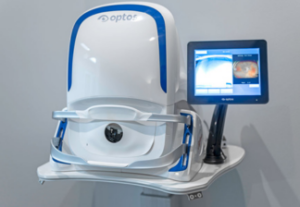
Optos retinal imaging provides a panoramic view of the retina in a single image. This technology allows us to capture up to 200 degrees of the retina and detect potential issues or diseases, such as glaucoma, macular degeneration, or diabetic retinopathy.
With optos retinal imaging, we can provide more accurate diagnoses and develop treatment plans for our patients.
Virtual reality visual field testing
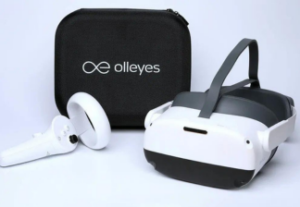
Virtual reality visual field testing uses virtual reality headsets to create an immersive experience that simulates real-life scenarios while measuring the patient’s visual field. It is an effective tool in detecting and managing eye diseases such as glaucoma, which can cause vision loss in the peripheral vision areas.
Corneal topography
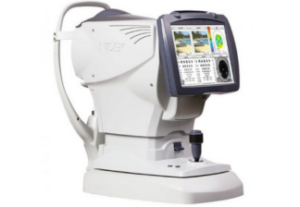
Corneal topography is a noninvasive imaging technique that measures the curvature and shape of the cornea, which is the front part of the eye. Corneal topography is used to diagnose and manage a variety of eye conditions, such as keratoconus, corneal dystrophies, and perform contact lens fittings.
Macular pigment optical density
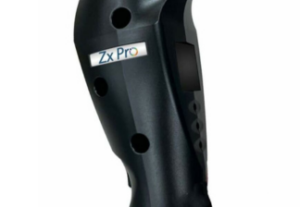
Macular pigment optical density (MPOD) testing is a noninvasive imaging technique used to evaluate the macular pigment in the eye. The macular pigment is responsible for protecting the retina from harmful blue light and oxidative stress, which can lead to macular degeneration.
MPOD testing helps us evaluate the level of macular pigment in your eye and determine if you are at risk for age-related macular degeneration.
LKC Technology for Eye Disease Care

LKC ERG (electroretinography) testing can play a crucial role in glaucoma management and diabetic eye care. With LKC ERG testing, doctors can assess the function of your retina and your visual pathways to detect glaucoma at an early stage and monitor its progression over time.
In addition, LKC ERG testing can evaluate retinal function to help identify abnormalities or changes caused by diabetes. This type of testing helps with determining the appropriate treatment plan for your needs and monitoring the effectiveness of treatments over time.
Focused on Your Eye Health
We know eye disease can be overwhelming to manage and deal with, and we strive to be your destination for eye disease diagnosis and management services in Watertown. We implement patient education and diagnostic technology seamlessly to deliver a memorable, effective experience.
If you’re experiencing symptoms of eye disease, or are at risk of developing an eye condition, contact us today to schedule your appointment and get the peace of mind that comes with a comprehensive eye exam.
Book AppointmentOur Location

Our Address
- 1300 19th St NE
- Watertown, SD 57201
Contact Information
- Phone: 605-882-0808
- Fax: 605-882-7078
- Email: office@weisseyecareclinic.com
Our Hours
- Monday: 8:00 AM – 6:00 PM
- Tuesday: 8:00 AM – 5:00 PM
- Wednesday: 9:00 AM – 5:00 PM
- Thursday: 8:00 AM – 5:00 PM
- Friday: Closed
- Saturday: Closed
- Sunday: Closed

Our Brands








Our Google Reviews
Our Blogs
Regular Vs. Specialty Contact Lenses: Know The Difference
UncategorizedAs an alternative to eyeglasses, contact lenses can effectively and conveniently correct poor vision. Unfortunately, certain eye conditions make it difficult to wear regular contact lenses. The good news is that R&D labs have been busy finding solutions for individuals with hard-to-fit eyes. The result: specialty contact lenses that are ideal for those with various […]
Symptoms Of A Foreign Body In The Eye: Pain, Irritation, Redness, And MoreSymptoms Of A Foreign Body In The Eye: Pain, Irritation, Redness, And More
UncategorizedAnything that gets into any part of your eye is a foreign body. It can be the occasional eyelash, sand, dirt, or glass. They are all objects that are not naturally found in the eye. It depends on the size and type of material, but a foreign body can cause minor irritation, bleeding, or even […]
Treatment Options for Managing Dry Eye Syndrome
UncategorizedThe field of eye care has come a long way in understanding and treating dry eye. There were limited treatment options in the past, but today, there are many ways to manage this condition. However, finding the proper treatment can be a process of trial and error. That is because dry eye causes and triggers […]
Regular Vs. Specialty Contact Lenses: Know The Difference
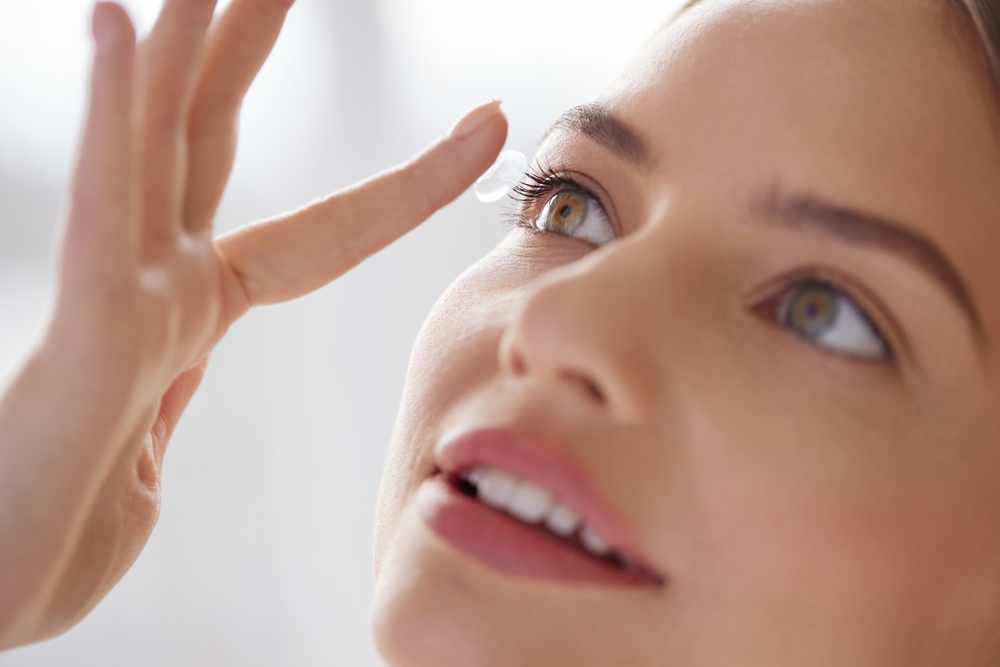
As an alternative to eyeglasses, contact lenses can effectively and conveniently correct poor vision. Unfortunately, certain eye conditions make it difficult to wear regular contact lenses. The good news is that R&D labs have been busy finding solutions for individuals with hard-to-fit eyes. The result: specialty contact lenses that are ideal for those with various […]
Symptoms Of A Foreign Body In The Eye: Pain, Irritation, Redness, And MoreSymptoms Of A Foreign Body In The Eye: Pain, Irritation, Redness, And More
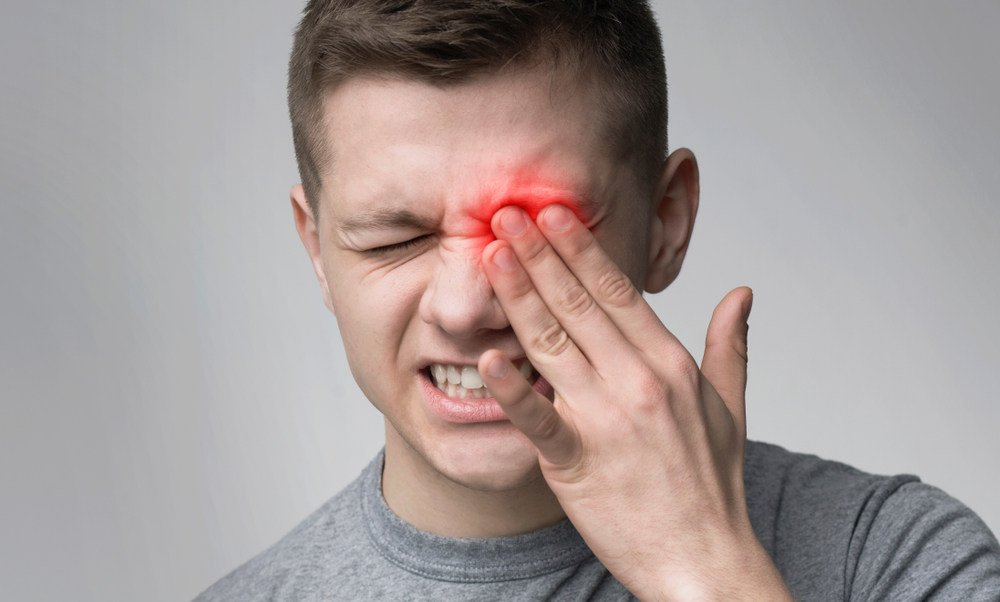
Anything that gets into any part of your eye is a foreign body. It can be the occasional eyelash, sand, dirt, or glass. They are all objects that are not naturally found in the eye. It depends on the size and type of material, but a foreign body can cause minor irritation, bleeding, or even […]
Treatment Options for Managing Dry Eye Syndrome

The field of eye care has come a long way in understanding and treating dry eye. There were limited treatment options in the past, but today, there are many ways to manage this condition. However, finding the proper treatment can be a process of trial and error. That is because dry eye causes and triggers […]

